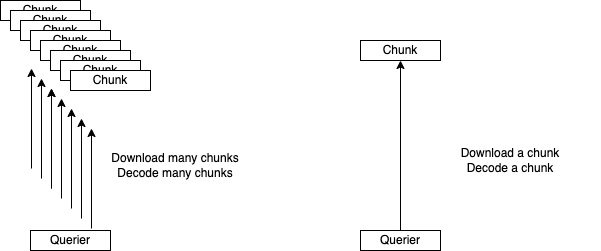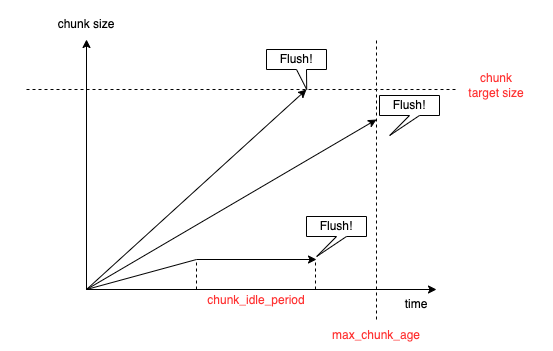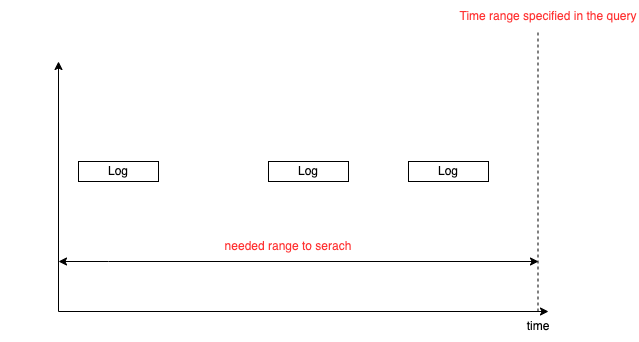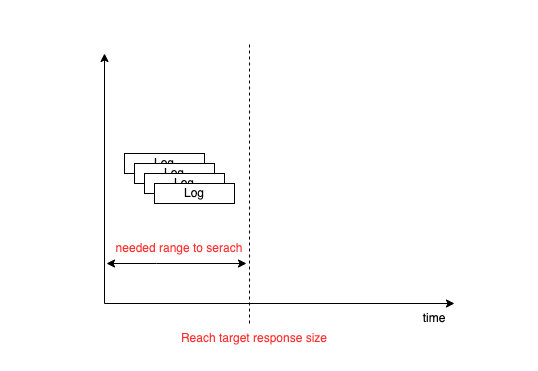Performance Improvement
Overview
In this section, I'll show you the tips to improve Loki's performance.
Basically, splitting a query, increasing querier instances, and increasing chunk size are the ways to improve performance but there are some points to consider.
Increasing chunk size
A way what we can try at first to improve query performance is increasing a chunk size.
Smaller chunks make queriers download more chunks to select logs.
It means that too many network communications happen and more decoding time for each chunk is needed.
Increasing target chunk size enables queriers to reduce the network communications and decoding time.
In addition, overall of the compression rate of chunks will be improved because the metadata in chunks is reduced.
Better to use Redis
However, memcached doesn't like to receive logs that are more than 500KiB.
In fact, I got many errors about putting chunks to it in my environment when the target chunk size is 1MiB.
Alternatively, I introduced Redis for chunk cache and the target chunk size is now 5MiB.
It caused dramatic performance improvement.
Consider some parameters
There are some very important parameters to determine the flush time.
They are max_chunk_age and chunk_idle_period.
Chunk reaches max_chunk_age or chunk_idle_period or chunk_target_size and then it is enqueued in a flush queue as this graph shows.
The flush without reaching chunk_target_size makes chunks smaller.
Therefore, even if we increase the chunk_target_size, it can't help to improve unless max_chunk_age and chunk_idle_period are enough.
In addition, too many labels make chunks being split too much so chunk size less likely to reach chunk_target_size.
That's why we need to consider label cardinality and these parameters with chunk_target_size.
Unbalanced traffic to specific streams
Distributors route streams to appropriate ingester instances by consistent-hash-algorithm.
It works fine and the streams are routed roughly evenly.
However, there was the case, where only specific streams have large amounts of logs.
It means that the streams are balanced evenly but traffic to append logs was unbalanced.
So too much access to specific instances happened and the ingesters were too busy and bottlenecked.
I didn't like to increase all of the ingesters' resources so I split the streams by adding a few labels in them so that they are split and the traffic was routed evenly as a workaround.
Improving long time range query
Queriers use the iterator to select logs so it can stop loading when the result reaches the target size.
Therefore, the queries for searching the many logs which are generated in a short time are very fast even if the query time range is long because queriers can stop in progress.
However, the queries that time-range is long and logs to be matched are few tend to be slow because Loki must search for the longer time range.
How should I address this issue?
One way is to split a query by appropriate time range for processing in a querier.
(Let's use splitting by time interval feature!)
Also, we can scale up and out the queriers.
Anyway, it is important to process queries in parallel that are not too long or too short for a single querier.
Last updated



